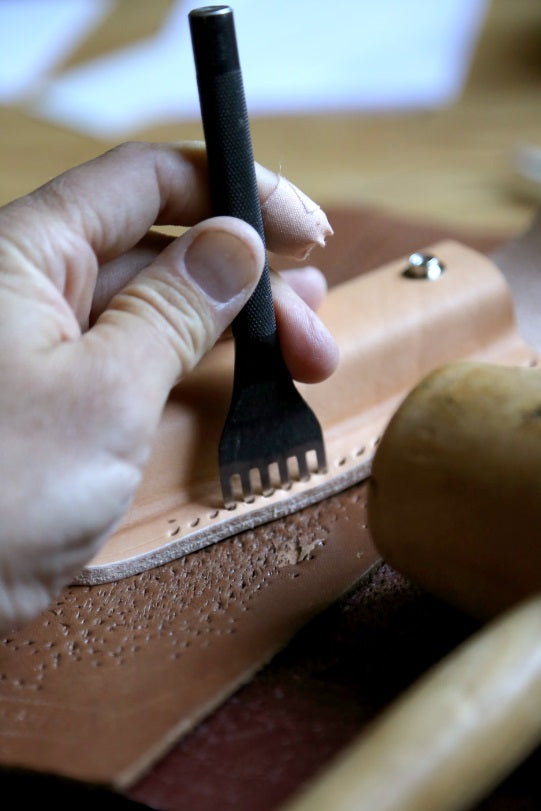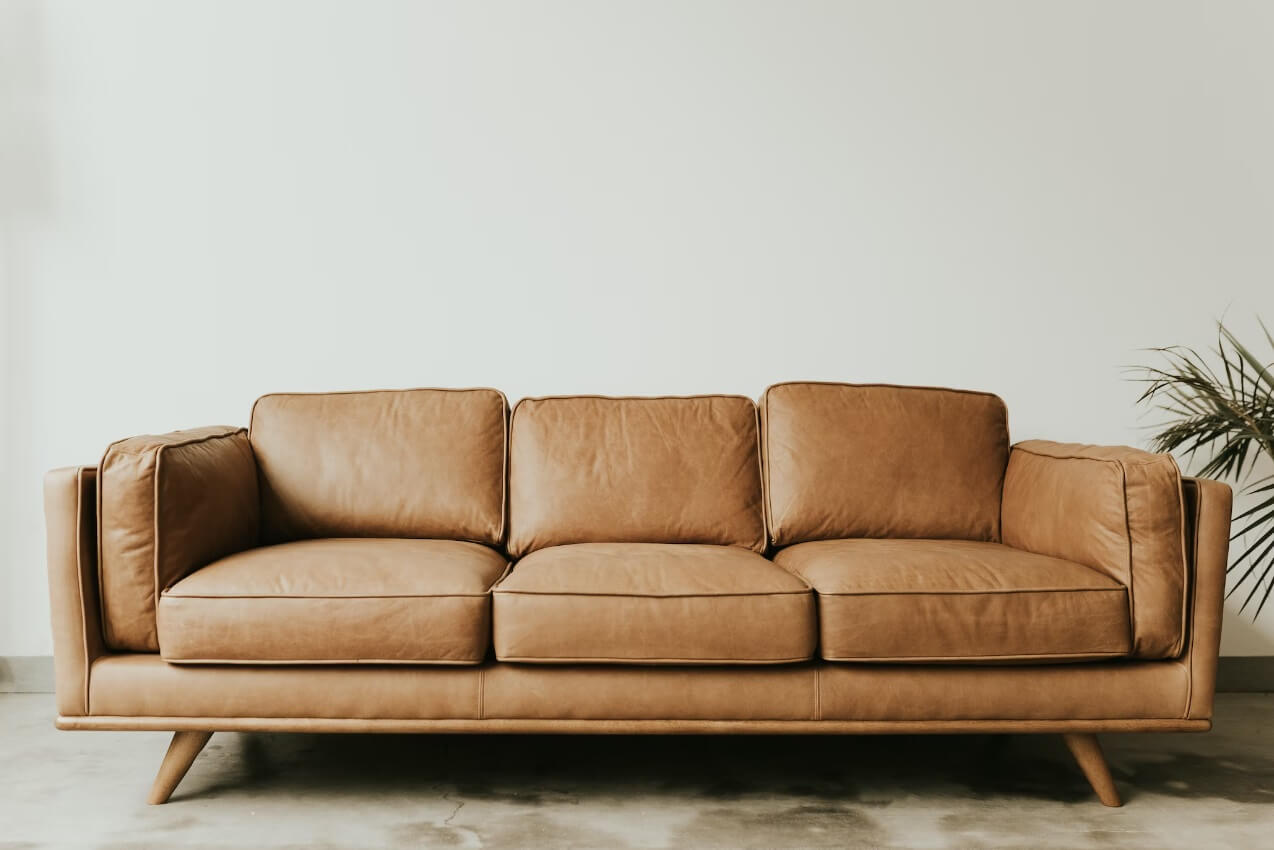When it comes to investing in furniture, especially something as central as a sofa, durability is paramount. You want to ensure your investment lasts for years, maintaining its elegance and comfort. In the realm of sofas, leather is often regarded as a premium choice, exuding sophistication and promising longevity. But within the realm of leather sofas, which one truly stands the test of time?
Let's delve into the realm of leather sofas and uncover the secrets to finding the most durable option that suits your needs.
Exploring the Terrain of Leather:
Leather sofas come in various types, each offering unique characteristics that impact their durability and longevity. Understanding these nuances is key to making an informed decision.

Different Types of Leather:
1. Full Grain Leather:Definition: Full grain leather is the highest quality leather available, as it retains the complete grain layer of the hide. Characteristics:
- Natural Beauty: Full grain leather showcases the natural markings, wrinkles, and texture of the hide, adding character and uniqueness to each piece.
- Durability: With the entire grain intact, full grain leather is incredibly durable and resistant to moisture, scratches, and wear.
- Aging Gracefully: Over time, full grain leather develops a rich patina, further enhancing its aesthetic appeal and character.
Definition: Top grain leather is derived from the top layer of the hide, where the grain is tighter and smoother compared to full grain leather. Characteristics:
- Uniform Appearance: Top grain leather often undergoes a process called "corrected grain," where surface imperfections are sanded or buffed out, resulting in a more uniform look.
- Durability: While slightly less rugged than full grain leather, top grain leather still offers excellent durability and resistance to wear.
- Versatility: The smoother surface of top grain leather makes it an ideal choice for a wide range of leather products, including furniture and accessories.
Definition: Split grain leather is obtained from the lower layers of the hide after the top grain has been removed. Characteristics:
- Less Durable: Split grain leather lacks the strength and durability of full and top grain leather due to the removal of the top layer.
- Prone to Wear: With its fibrous composition, split grain leather is more susceptible to wear and tear over time, making it less suitable for high-traffic areas.
- Affordability: Split grain leather is often more affordable than full and top grain leather, making it a budget-friendly option for those seeking the look of leather without the premium price tag.
Definition: Bonded leather is composed of leather scraps bonded together with adhesive and reinforced with synthetic materials. Characteristics:
- Budget-Friendly: Bonded leather is one of the most affordable leather options available, making it accessible to a wide range of consumers.
- Lacks Durability: Due to its composition, bonded leather lacks the durability and longevity of genuine leather options.
- Appearance: While bonded leather may mimic the look of genuine leather, it often lacks the natural feel and texture, resembling more of a synthetic material.

Unveiling the Champion:
In the quest for the most durable leather sofa, full-grain leather emerges as the undeniable victor. Its natural integrity and minimal processing ensure longevity that surpasses other types of leather. While it may come with a higher price tag, the investment pays off in the form of lasting beauty and comfort.
The Science Behind Durability:
Statistics reveal the superiority of full-grain leather when it comes to longevity. Studies indicate that full-grain leather sofas tend to outlast their counterparts, requiring fewer repairs and replacements over time. This underscores the value of investing in quality upfront to avoid costly replacements down the line.
Studies conducted on the longevity of leather sofas consistently highlight the superior performance of full-grain leather compared to other types of leather and upholstery materials. These studies often involve longitudinal analyses of furniture lifespan, tracking factors such as wear and tear, structural integrity, and the need for repairs or replacements.
One such study, published in a reputable furniture industry journal, examined the performance of various types of leather sofas over a ten-year period. The findings revealed a clear trend: full-grain leather sofas consistently exhibited superior durability compared to sofas made from top-grain, split-grain, or bonded leather.
The study attributed this durability to several key factors inherent to full-grain leather:
-
Natural Integrity: Full-grain leather retains the entire grain layer of the hide, preserving its natural strength and resilience. Unlike lower-grade leathers that may undergo excessive processing and treatments, full-grain leather maintains its structural integrity over time.
-
Minimal Corrections: Unlike other types of leather that may undergo heavy corrections to conceal imperfections, full-grain leather retains the natural markings and variations inherent to the hide. While this may result in a more rustic appearance, it contributes to the leather's durability by preserving its original strength and character.
-
Breathability and Flexibility: Full-grain leather allows air to pass through its pores, preventing moisture buildup and preserving the leather's flexibility. This inherent breathability reduces the risk of cracking and peeling, common issues associated with less breathable upholstery materials.
These scientific insights underscore the value of investing in quality upfront when purchasing a leather sofa. While full-grain leather may come with a higher initial cost, the long-term benefits far outweigh the expense. By choosing a full-grain leather sofa, consumers can enjoy not only superior durability but also timeless elegance and comfort for years to come.
In summary, the science behind the durability of full-grain leather sofas is grounded in empirical evidence and industry research. These studies highlight the inherent strengths of full-grain leather and its ability to outperform other upholstery materials over time. By understanding these scientific principles, consumers can make informed decisions when selecting furniture that will stand the test of time.

Protecting Your Investment:
To maximize the lifespan of your leather sofa, proper care and maintenance are crucial. Regular cleaning and conditioning can prevent premature wear and maintain the suppleness of the leather, ensuring it ages gracefully over the years.
Here's a closer look at how you can protect your investment:
Cleaning:
Regular cleaning is vital to remove dirt, dust, and debris that can accumulate on the surface of your leather sofa. Use a soft, dry cloth or vacuum with a brush attachment to gently remove surface dirt. For more stubborn stains, use a mild leather cleaner specifically formulated for the type of leather on your sofa. Avoid harsh chemicals or abrasive cleaners, as they can damage the leather's finish.
Conditioning:
Leather is a natural material that can dry out and lose its suppleness over time, especially in dry or humid environments. Conditioning your leather sofa helps replenish moisture and restore its natural oils, keeping it soft and flexible. Choose a high-quality leather conditioner and apply it according to the manufacturer's instructions. Regular conditioning not only extends the lifespan of your leather sofa but also enhances its luster and appearance.
Avoiding Sunlight and Heat:
Exposure to direct sunlight and heat can cause leather to fade, dry out, and crack prematurely. Position your leather sofa away from windows or use curtains or blinds to block out harsh sunlight. Additionally, avoid placing your sofa near heat sources such as radiators or fireplaces, as prolonged exposure to heat can damage the leather fibers.
Preventing Scratches and Tears:
To prevent scratches and tears, avoid placing sharp objects or rough materials on your leather sofa. Use coasters or trays for drinks and snacks to prevent spills and stains. If you have pets, consider using a protective cover or blanket to shield your sofa from claws and accidental damage.
Professional Maintenance:
In addition to regular cleaning and conditioning, consider scheduling professional maintenance for your leather sofa. Professional cleaners have the expertise and specialized equipment to deep clean and condition leather, ensuring it stays in optimal condition for years to come.
By following these tips and incorporating them into your regular cleaning routine, you can protect your investment and enjoy your leather sofa for many years of comfort and style. Proper care and maintenance not only preserve the durability of your sofa but also enhance its beauty, making it a timeless centerpiece in your home.

Beyond Leather: Comparing Upholstery Materials
While leather reigns supreme in terms of durability, it's essential to consider other upholstery materials in the market. Fabric sofas, while diverse and affordable, may not offer the same level of resilience as their leather counterparts. Synthetic materials like polyester and nylon may be durable but lack the luxurious appeal of genuine leather.
Fabric Sofas:
Fabric sofas offer a wide range of styles, colors, and textures, making them incredibly versatile and suitable for various design aesthetics. They are often more affordable than leather sofas, making them an attractive option for budget-conscious buyers. However, when it comes to durability, fabric sofas may not match the resilience of leather. Fabric is more prone to staining, fading, and wear over time, especially in high-traffic areas. While some fabric sofas come treated with stain-resistant coatings, they still require regular maintenance to preserve their appearance.
Synthetic Materials:
Synthetic materials like polyester and nylon are engineered to mimic the look and feel of natural fibers while offering enhanced durability and resistance to wear and tear. While they may not possess the luxurious appeal of genuine leather, synthetic upholstery materials are often more budget-friendly and easier to clean. Additionally, they may be a suitable choice for households with pets or small children, as they are less susceptible to scratches and punctures compared to leather.
Considerations for Choosing:
When comparing upholstery materials, it's essential to consider your lifestyle, preferences, and budget. While leather reigns supreme in terms of durability and sophistication, fabric sofas and synthetic materials have their own merits. Fabric sofas offer versatility and affordability, while synthetic materials provide enhanced durability and ease of maintenance. Ultimately, the choice boils down to personal preference and the specific needs of your household.
Conclusion:
In the realm of furniture, the quest for durability leads us to the timeless elegance of leather sofas. Among the various types of leather, full-grain leather emerges as the indisputable champion, boasting unparalleled longevity and sophistication. By investing in a high-quality leather sofa and adhering to proper maintenance practices, you can enjoy years of comfort and style in your living space. So, when pondering, "What leather sofa is the most durable?" the answer is clear: full-grain leather reigns supreme.





